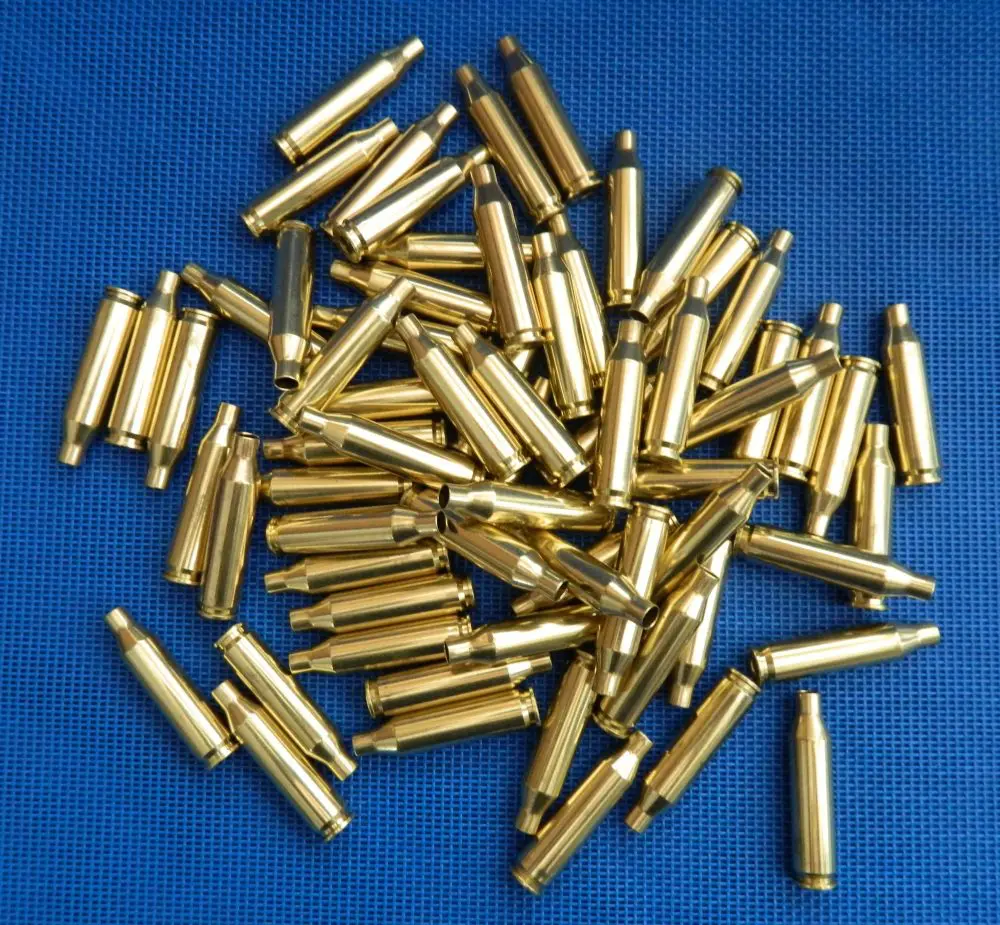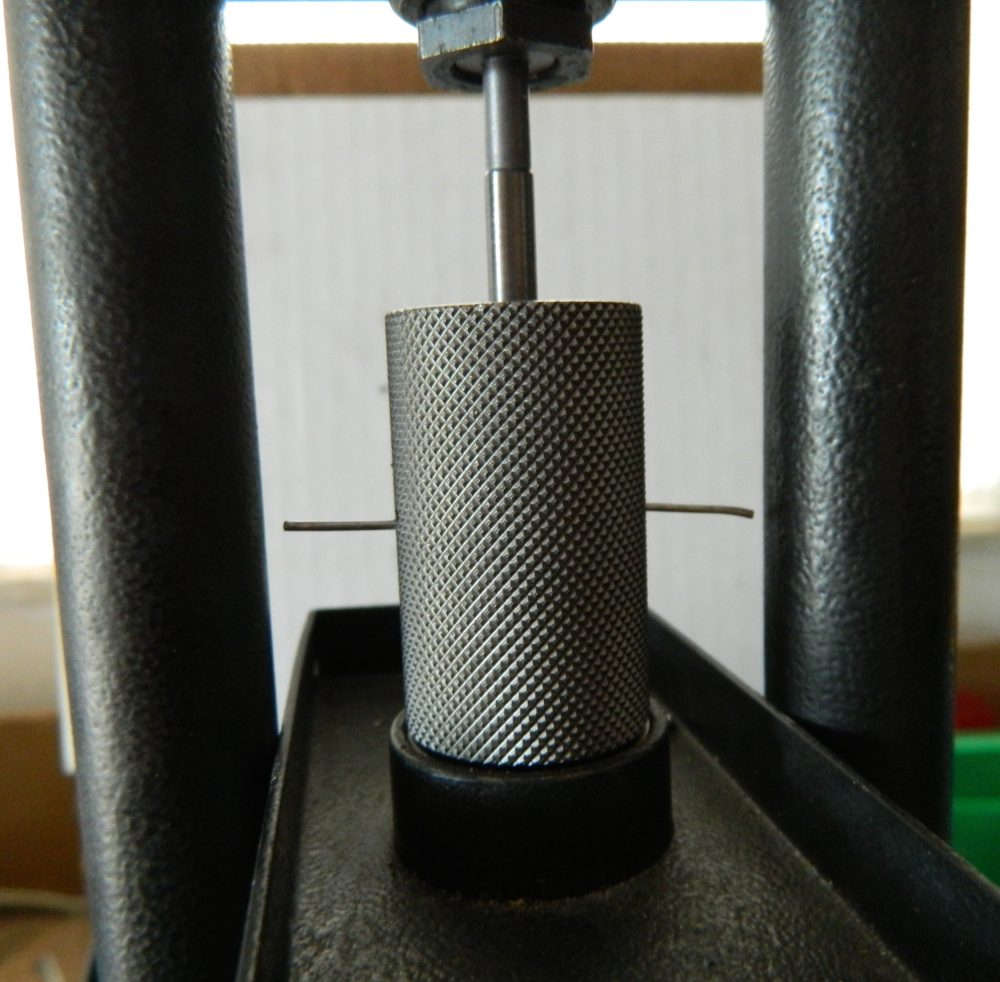Basically three components account for an accurate shot from a rifle: the rifle itself, the shooter, and the ammunition used. Buying good equipment takes care of the first, while experience and training are the prerequisites for the second.
For most people, quality ammo, often “match ammo,” means loads from a major manufacturer and the ammo is, indeed, normally very good. But to some handloaders, it means carefully crafted ammo that shoots the best in their individual rifle(s).
Batch of .243 Winchester cases after final polish, ready to be reloaded.
Table of Contents
LOADING FOR PRECISION
This is how I load for precision rounds. Depending on how much time you want to invest—and how precise you want to be—you may do it differently.
First I tumble clean the brass in a Dillon Precision vibratory tumbler to remove any carbon left on the case that could possibly scratch the loading dies. Clean, polished brass is also easier to run into the dies. Because the loaded rounds may be fired in different rifles, I full-length resize each case.
After sizing, I trim each case to length with a Forster Products case trimmer, then deburr and chamfer the case mouth with a hand deburring tool. Pretty standard practice so far.
Corbin core swage die bleeds out extra lead in small wire sprues.
EXTRA STEPS
The next steps, which are not done by all reloaders, are to use a primer pocket uniformer and a flash hole uniforming tool. Both tools are made by most reloading suppliers. I have used Lyman uniforming tools for years and am very satisfied with them.
The primer pocket uniformer cuts primer pockets to a uniform depth and square to the case head, so every primer seated sits at the same height. It also does a great job of cleaning the primer pocket, removing any carbon left there when fired. Then I use the flash hole uniforming tool, because when brass cases are manufactured, the process can leave burrs inside the flash hole, and this may cause erratic ignition from one case to the next.
From left: rough core casting, swaged core, core seated in jacket, completed bullet.
The cases are tumbled one final time to a highly polished finish. Yes, it makes for good-looking ammo, but the main reason is twofold: it ensures all the resizing lube that may contaminate the primer and powder is removed, and it makes chambering and extraction easier.
The final step before repriming is to weigh each case on an MTM digital scale and group them according to weight. Remember, for precision shots, make everything as uniform as possible. I use a hand priming tool rather than the priming tool on the reloading press. This allows me to “feel” the primer being seated and not possibly crush it into the pocket with the great force a press exerts.
To charge the cases, I use an RCBS Uniflow Powder Measure set to throw just under the weight required. The charge is brought up to the full weight with an RCBS powder trickler and measured onto the MTM digital scale to ensure that each charge weight is exactly the same.
a href=”https://www.swatmag.com/app/uploads/swat/2018/09/LB-4.jpg”>
Gradually adjusting the core swage die, when combined with the jacket, author made bullets that weighed exactly 85 grains.
SEATING THE BULLET
The final step for a completed cartridge is seating the bullet. After this, I take several cartridges at random and run them through a Hornady Lock-N-Load Ammunition Concentricity Gage. This tool will both identify and correct bullet runout. Runout, or lack of trueness, can be caused by several factors in the reloading process, including dies/shellholder that are slightly off center, and taking off more brass on one side of the case during the deburring process. If the sample cartridges gauge OK, and if everything in the loading process was the same, I don’t bother checking for runout on every loaded round.
Commercially available bullets made by Speer, Nosler, Sierra, Hornady and others are usually very consistent and I have no qualms about using them for precision handloads.
a href=” https://www.swatmag.com/app/uploads/swat/2018/09/LB-6.jpg”>
Forster case trimmer with Lyman primer pocket uniformer and flash hole uniforming tools.
SUPERIOR RESULTS
For a couple of calibers, however, I make my own jacketed bullets with Corbin swaging dies. For example, I recently used Corbin precision jackets with my own cast cores for my grandson Austin’s Savage .243. This rifle seems to like 85-grain bullets and, by carefully adjusting the core swage dies, I was able to turn out bullets that weighed exactly 85.0 grains.
a href=” https://www.swatmag.com/app/uploads/swat/2018/09/LB-7.jpg”>
Austin Hansen fired this three-round group from a box stock Savage .243. Center circle of target is ¾ inch.
Austin’s Savage was bought from Cabela’s as a package deal that included an inexpensive Bushnell scope. Normal groups average about 1.50 to 1.75 inches. With a load that has proven accurate in the past, I reloaded 50 rounds using the above-described techniques, and we headed to the range. After zeroing the rifle, Austin shot a three-round group that went into the ¾-inch center circle of a TruGlo target. Not bad at all for a relatively inexpensive box stock hunting rifle.
The proof is in the pudding, and if the extra work does not result in increased accuracy, why bother? On the other hand, if you’re willing to put in a little extra time and decrease the size of your groups, why not do so? The results can be very satisfying.
SOURCES:
Corbin
(541) 826-5211
www.corbins.com
Dillon Precision
(800) 223-4570
www.dillonprecision.com
Forster Products
(815) 493-6360
www.forsterproducts.com
Lyman Products Corp.
(800) 225-9626
www.lymanproducts.com
MTM Molded Products Company
(937) 890-7461
www.mtmcase-gard.com
RCBS
(800) 379-1732
www.rcbs.com









